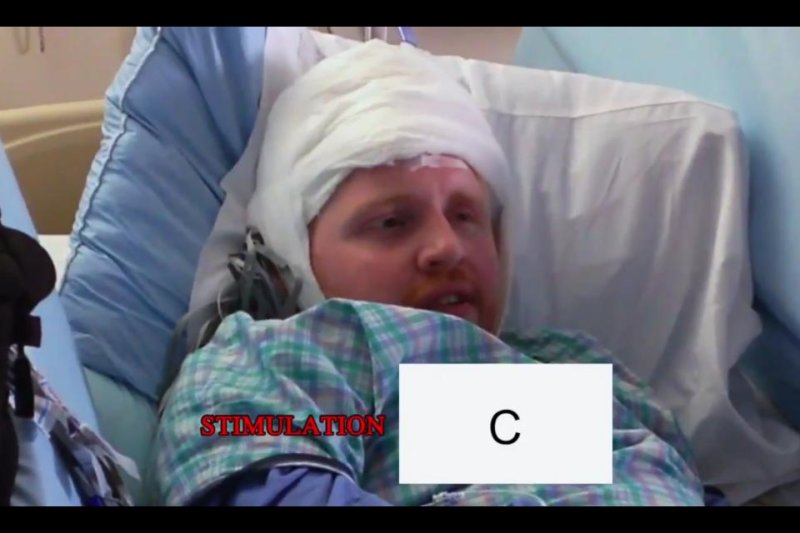Epilepsy patients had trouble identifying words and letters while the word forming region of the brain was disrupted with electrical stimulation. Photo by University of Pittsburgh/Laboratory of Cognitive Neurodynamics/YouTube/screenshot
PITTSBURGH, July 20 (UPI) -- How does the human brain process words? It's a question that troubled neuroscientists for more than 200 years.
"Wernicke, Dejerine, and Charcot, among the most important and influential neurologists and neuroscientists of the 19th century, debated whether or not there was a visual center for words in the brain," neuroscientist Avniel Ghuman, an assistant professor in the University of Pittsburgh, said in a news release.
New research by Ghuman and his colleagues confirms the use of a neural region known as the left mid-fusiform gyrus in word visualization and processing.
Ghuman and Elizabeth Hirshorn of Pitt's Learning Research and Development Center recorded neural activity in the word formation region of four epileptic patients as they read.
Each patient received surgical treatment for drug-resistant epilepsy. The study volunteers gave researchers permission to implant electrodes in the left mid-fusiform gyrus. Researchers disrupted neural activity in the word formation region by supplying short shocks of electricity.
Electrical stimulation impaired the four patients' ability to recognize words. One patient misperceived letters, while another claimed to see words and word fragments that weren't there. Patients had no trouble recognizing faces and imagery during stimulation.
By recording neural activity in the left mid-fusiform gyrus during the reading process, researchers were able to pick up on neuron signatures that corresponded with specific words. The unique neural pathways suggest the word formation region helps readers differentiate between words that are visually similar -- like "tomb" and "womb."
Scientists still can't explain the evolutionary origins of the left mid-fusiform gyrus -- the ability to read is a late development in the history of the human species -- but the new research is proof the brain is uniquely geared to visualize and process the written word.
"This study shows that the visual word form area is exquisitely tuned to the fine details of written words and that this area plays a critical role in refining the brain's representation of what we are reading," Hirshorn said. "The disrupted word and letter perception seen with stimulation provides direct evidence that the visual word form area plays a dedicated role in skilled reading."
The findings -- detailed in the journal PNAS -- may lead to an improved understanding of reading disorders like dyslexia.
"It is exciting that with modern brain-recording techniques and advanced analysis methods, we are finally able to start answering questions about the brain and the mind that people have asked for centuries and contribute to our understanding of reading disorders," concluded Ghuman.















